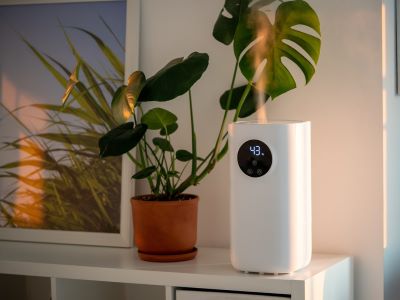Monstera plants are popular houseplants that are known for their large, glossy, leaves. They are easy to care for, however, sometimes you may notice that your monstera is droopy, or limp. So, it’s normal to have questions in your mind; Why is your Monstera droopy?
Today, we will discuss the primary reasons behind your monstera droopy leaves, and will also give you solutions to prevent your houseplant.
Eventually, you will have a better understanding of why your monstera is droopy and how you can fix it again. Let’s get started!
Contents
Reasons Why Your Monstera Droopy
There are several possible reasons for this condition, and some of them can be easily fixed. In the following section, we will explain to you the main causes of monstera droopiness and how to identify them.
1. Not Proper Watering
Watering your monstera with a sufficient amount of water is the most important thing. Here, I didn’t use the word ‘more’ watering or ‘less’ watering because both can cause your monstera droopy. So, please do not hydrate your plant constantly.

It is recommended to, first, check the watering issue with your mostera, whether it is underwatering or overwatering. For instance, if underwatering is an issue, then the simple way to fix the issue is soaking the plant in water. There is a method to do this;
- First, check the drainage hole in the plant’s pot so that it is capable of soaking up the water.
- Take a few inches deep water tray and fill the 2-3 inches with water.
- Put your monstera in the water tray for at least 45 minutes.
- Check the moisture levels of the soil by touching the top 2-3 inches. If it feels moist, then the root has entirely soaked the water.
- Finally, start watering regularly.
On the other hand, for overwatering, take the plant out of the pot and check the roots. If the roots are healthy and there are no signs of root rot, then there is no need to worry. Just wait for the 2-3 inches of the soil to get dry before another shot of hydration.
2. Soil Is Too Dry
It’s true, because of dry soil also, your monstera can be droopy. So, make sure that you’re watering your plant regularly to keep the plant in a soil-moist form. There is a tip for watering a monstera, water the plants until water starts draining out from the pot.

If you don’t know when to water your plants, then we have a trick to check the moisture. You can check by sticking your fingers in the soil, and if two inches of the soil is dry, then water the plant. To increase the humidity around your monstera, set up a humidifier nearby your plants.
3. Too Much Light
We assume you are aware that plants use extra light to generate heat. But in Monstera case, they need an indirect light for several hours. Since, excessive direct light can cause water evaporation before plants can use it. So, if your monstera is affected by too much light, you can see the signs. Such as scorched leaves with crispy brown edges, or curled leaves.

To cure this issue, move your plant to a shadier place and filter the direct sunlight with a sheer curtain. Furthermore, you can use the light meter to monitor the light levels around your monstera and set the light or plant accordingly.
4. Temperature Stress
Monstera plants are sensitive to temperature. If the plant is kept in a hot atmosphere, its leaves will start dropping and the stem will become limp. Also, in cold weather, it reacts the same. So, it is very important to keep your plant somewhere, where the temperature is between 64-74 degrees Fahrenheit.
Yellowing leaves, brown edges, and slow or stunted growth are signs of temperature stress. If you notice any of these signs, then your monstera is suffering from temperature stress.
Don’t worry we have a solution for you to save your plant from temperature stress:
- Keep your monstera at the most suitable temperature
- You can use a thermometer to monitor the temperature around your monstera and adjust the temperature accordingly.
- You can spray your Monstera deliciosa once a week to increase the surrounding humidity.
5. Infestation of Insects and Pests
As we have an idea, monstera cannot solely deal with pests and insects, we recommend you keep a close observation of your plant. This will help you keep your monstera free from pests and insects.
For your reference, we have jotted down a table for you that will give you information about types of pests in Monstera, symptoms, and treatment. If you find any of the below symptoms in your plant, we suggest you take quick action as stated in the table.
| Type of Pests in Monstera | Symptoms | Treatment |
| Spider Mites | At the bottom of the leaf feels sticky or gritty, where they like to congregate. | Use insecticidal cleanser to get rid of spider mites. |
| Mealybugs | Mealybugs suck sap, weakening the plants. High populations can slow down the plant growth. | Neem oil can help to get rid of mealybugs. |
| Thrips | It looks like a little white football and appears on the undersides of the leaves. | A strong stream of water can knock off the thrips from plants. |
| Scale Insects | You can see white or yellow spots on affected leaves. It becomes yellow and falls off. | Using a cotton swab, rub alcohol to stop scale. |
| Fungus Gnats | It creates a white or black powdery residue. Fungus gnats crawl on the top of the soil or fly out from the pot. | Fungus live in the top layers of soil. So, it’s good to water the plant from the bottom rather than the top. |
6. Over-Fertilization Leads to Monstera Droopy Issue
Like other reasons for Monstera droopy, overfertilization is also one of them. Overfertilization leads to root toxicity and stops the roots from absorbing nutrients from the soil. As a result, monstera drops the leaves. If this is the reason for Monstera’s droopiness, you can look for signs such as yellow leaves, slow growth, and brown edges.
To prevent the issue, you should take the actions to save it. Firstly, flush out the soil with water. Clean the leaves and pot for good. On the other hand, you can try a soil test kit to check what necessary nutrients your plant is lacking. So that, you can fertilize it accordingly and save the plant’s health.
7. Root Rot Can Be the Reason of Monstera Droopy
So, far, we have discussed many issues regarding the monstera droopy issue. Root rot is also one of the main reasons we should look upon. Yes, you heard me right.
Let me tell you what root rot is, it is a fungal infection in the soil caused by overwatering. When your plant gets root rot, it starts hurting its roots. The roots turn black and slimy, and eventually die.
To save your monstera plant suffering from root rot. Follow some basic steps to save it:
- Remove the monstera plant from the pot.
- Cut off the affected roots and clean the healthy leaves with a dilute hydrogen peroxide solution.
- Use a new potting mix to revive the plant.
Conclusion
We hope you enjoyed reading this blog post and learned something new about monstera plants and their care. By following the tips and tricks we shared in this post, you can prevent and treat the common causes of monstera droopiness/monstera droopy and keep your plant healthy and happy.
Remember to check your monstera regularly for signs of stress and adjust your watering, lighting, and fertilizing accordingly.

Hello, I’m Rose Lehman, the content writer of cozynest. I have been a gardener for over 5 years, and I have a certificate in master gardening from the Oregon State University Extension Service. I enjoy writing about all aspects of gardening, from the basics to the advanced, and from the practical to the creative. I also love to explore different types of gardens, cultures, and styles, and share them with our readers. My goal is to inspire and inform our audience, and help them grow their own cozynest.

